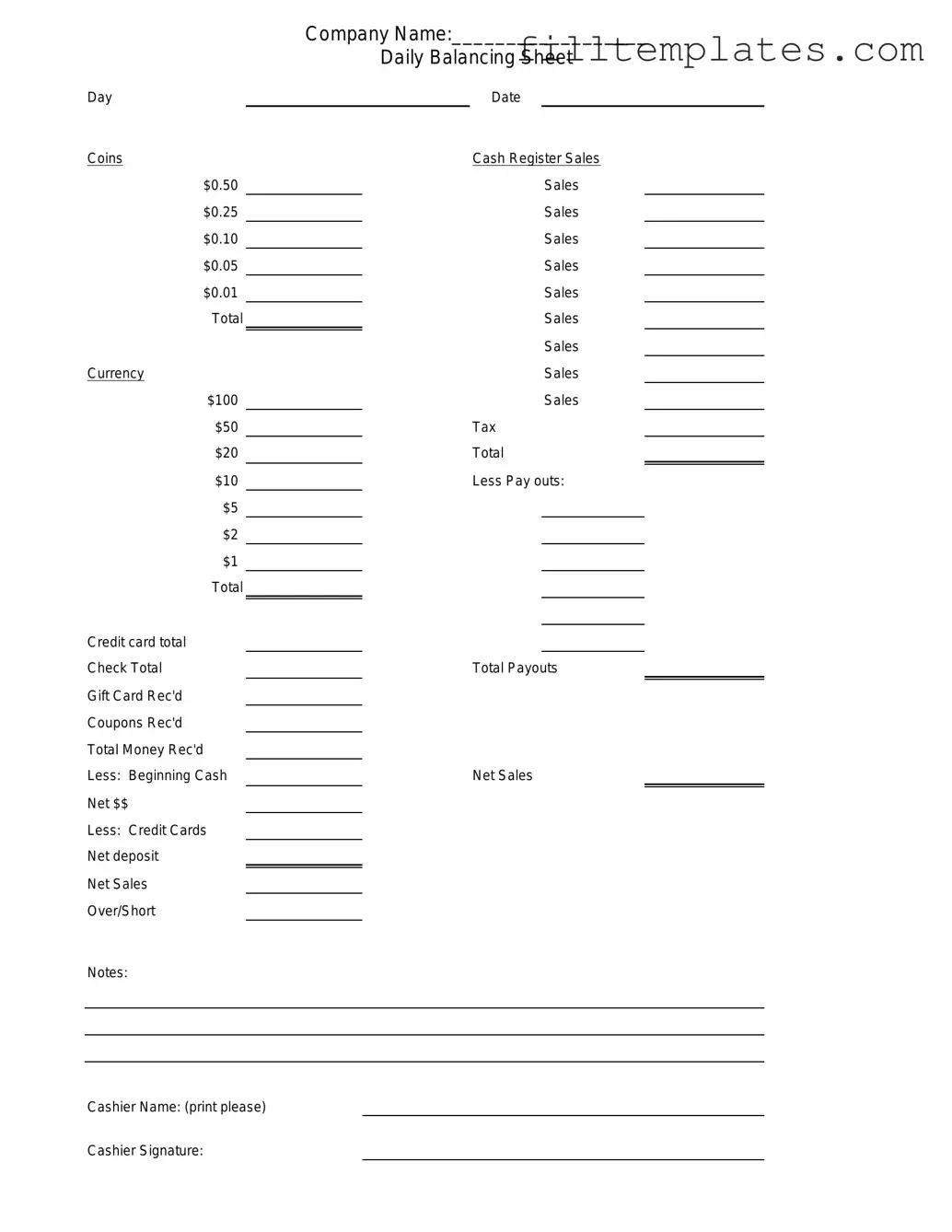Download Cash Drawer Count Sheet Template
The Cash Drawer Count Sheet is a document used by businesses to track the amount of cash in a cash drawer at the end of a shift or day. This form helps ensure accuracy in cash handling and provides a clear record for reconciliation purposes. By documenting the cash count, businesses can identify discrepancies and maintain financial integrity.
Open Cash Drawer Count Sheet Editor

